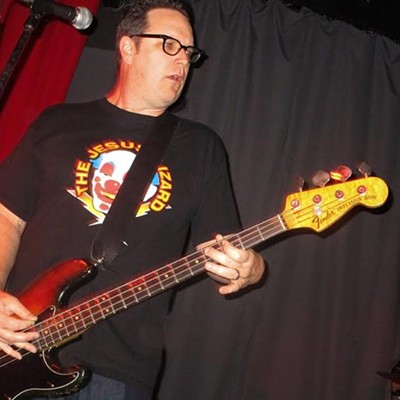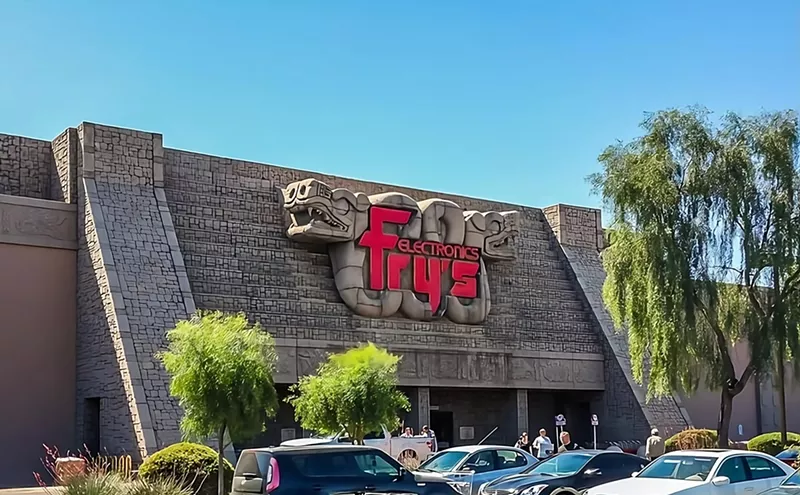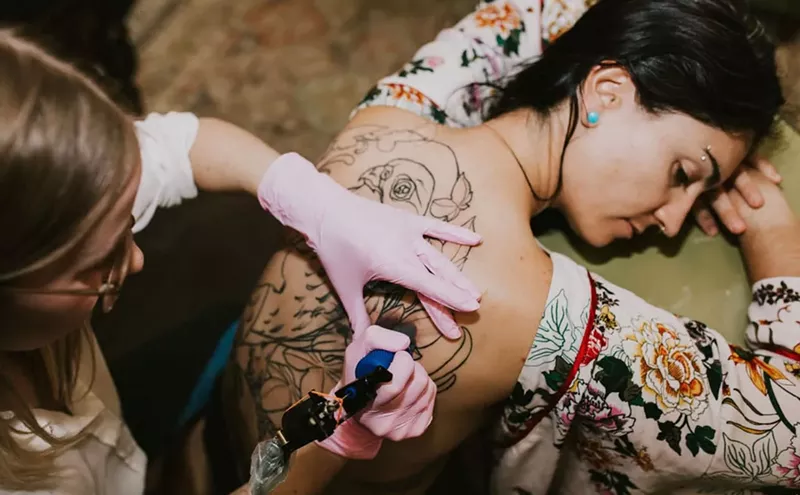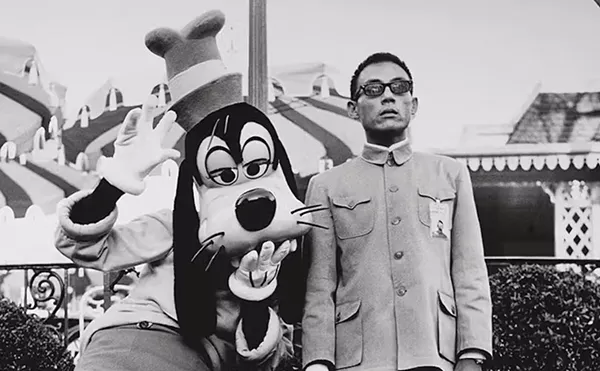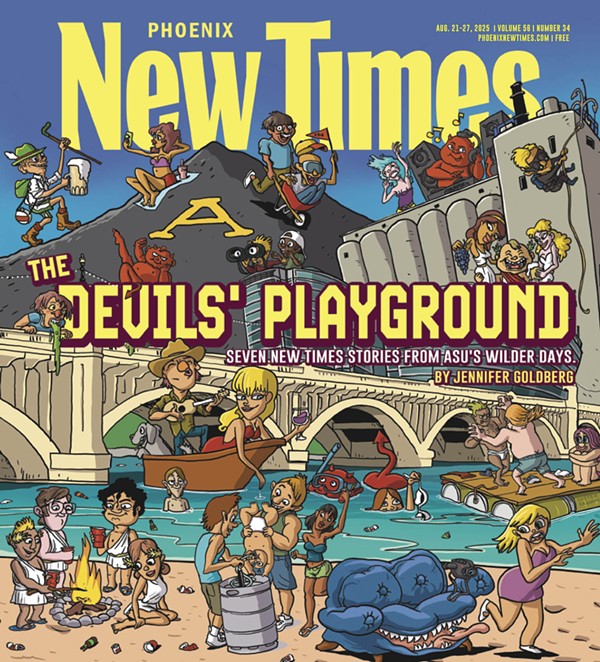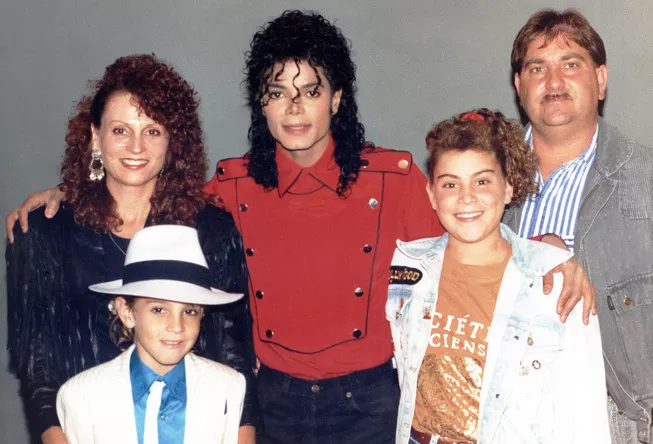
Michael Jackson (center) with the family of Wade Robson: Joy Robson, Wade, Chantal Robson, and Dennis Robson in 1990.
Dan Reed/HBO
Tom Reardon has worked with victims of sexual violence in the Phoenix area for more than two decades. After watching Leaving Neverland, the HBO documentary about Michael Jackson's alleged sexual relations with children, he was moved to write this series of stories for Sexual Assault Awareness and Prevention month. Today is the first of four lessons from the documentary.
Here’s a crazy thought: No child should be touched on the private parts of their body unless it is to keep them clean or healthy.
This is a simple yet effective rule that should be taught to children everywhere. Unfortunately, many children are not taught this rule, and for literally millions of people alive today, the result is abuse capable of affecting every aspect of their lives. Child sexual abuse has destroyed families, ruined lives, and made the American public wince at the mere thought of it for way too long.
The recent documentary Leaving Neverland by British filmmaker Dan Reed shows that child sexual abuse is a complex crime with multiple facets, and that many people simply do not know how to talk about it. If we are being honest, it is definitely time to be candid about sexual violence: We don't know how to talk about it and we don't want to talk about it either.
There is hope this documentary, which was released on HBO in the U.S. on March 3, will open up the eyes of parents, teachers, and caregivers of children everywhere as to how this crime really works. Leaving Neverland is an uncomfortable film to watch, but not because the subject matter is extremely controversial or because it relates to the allegations of sexual abuse of multiple boys against the late Michael Jackson. We already know these things are terrible.
The film is uncomfortable because it explores how the grooming process works in child sexual abuse better than any other film or television show ever has.
The Rape, Abuse & Incest National Network (RAINN), which is a fantastic source of information for anyone needing to know how to help, prevent, or understand sexual violence, currently states that “every 11 minutes, child protective services substantiates or finds evidence for a claim of child sexual abuse.”
Simple math shows that this means just under 48,000 cases of child sexual abuse are substantiated every year, or just under 1,000 per state. When you consider that most experts in the field of sexual violence say that only 12 to 30 percent of all cases of sexual abuse against children are reported, this greatly increases the scope of the problem.
Many people think of sexual abuse as something that happens when a creepy stranger lures a child into his (or her, yes, women sexually abuse children, too, but not as often as men) car with candy. This is not the case, though. On the RAINN site, they also give the statistic that 93 percent of children who are sexually abused are abused by someone they know. It’s not stranger danger that children who have been sexually abused have to fear. It’s someone they know, most likely someone they live with and love, and possibly someone whom they trust implicitly.
When we tie the two RAINN statistics together, it turns out that 44,437 of the substantiated yearly cases of child sexual abuse most likely are perpetrated by someone the child knows. These children have been “groomed” to, at least at first and potentially for years and years, accept what is happening to them and remain silent.
In many cases, children just need the right opportunity to speak out about what has happened to them. Since 1997, I have worked on and off for Casa, the Center For Positive Social Change, here in Phoenix, which was known as the Center Against Sexual Abuse when I first started there as a prevention specialist. It was my job to go into classrooms around the Valley and share the same safety rule that I wrote in the first sentence of this piece. Over my years of working with children, most of whom were in grades K-12, I only received one disclosure about a crime that happened with a stranger.
In that case, the student in question had been walking to school and a man drove by him and threw a Polaroid picture out the window of his car that showed an adult male’s exposed penis. I just happened to be in the school office when he walked in. He had remembered our safety lesson from the day before, so he turned over the picture to me and the school secretary, who immediately called the Mesa Police Department. The incident resulted in an arrest and we can only guess as to how many children this one brave young man saved from being traumatized by a similar situation or possibly something worse.
From 1997 to 1999, when I spent the majority of my time teaching Casa’s Kids Talk program designed to prevent child sexual abuse, my co-workers and I took several hundred disclosures of sexual abuse from children and notified local law enforcement. For me personally, that Polaroid incident was the only time the abuse that was disclosed to me involved a stranger.
This is why Leaving Neverland is so important.
If you take out whatever your preconceived notion about Jackson’s innocence or guilt and simply look at the story told by the two young men featured in the film, Wade Robson and James Safechuck, you will gain an incredible understanding of how child sexual abuse works, especially how victims are groomed by the (alleged, in the case of Jackson) perpetrators, and sadly, why no one wants to talk about the crime itself.
In part one of the documentary, as pictures of a young Robson and an adult Michael Jackson flash across the screen, Robson says in a voiceover, "He was one of the kindest, most gentle, loving, caring people I knew. He helped me tremendously. He helped me with my career, he helped me with my creativity. With all of those types of things." Then, the camera goes to an adult Robson to see and hear him state, "and he also sexually abused me for seven years."
Robson was 5 years old when he met Jackson and just under two years later, the sexual abuse began.
Most of us cannot wrap our brains around why someone would want to sexually abuse a child. Why would someone want to touch a child sexually or expose them to pornography at an early age? Why would someone want to watch a child use the bathroom or take pictures of them while naked or changing their clothes? These are just a few ways that sexual abuse occurs with children, but the vast majority of us will never understand why someone would choose to do this. We are simply not wired that way.
Through studies, though, we know that some people who commit this crime were sexually abused as children themselves, but it’s also a popular misconception that everyone who is abused as a child will grow up to abuse others as an adult. We know that it is about power and control, as all forms of abuse ultimately are, but with sexual abuse it is often about the perpetrator, as the excellent website 1in6.org states, exhibiting and later doing three common things:
• They have power or influence over a child and have developed a sexual interest in this child.“Stranger danger” is a great safety rule, for sure, but for the vast majority of children who are sexually abused, it is also woefully inadequate.
• They have allowed themselves to ignore any “internal and external barriers or ‘stops’ that would otherwise prevent them from betraying the child’s trust.”
• The perpetrator “acts on their sexual fantasies and impulses toward the child.”
Lesson From Leaving Neverland, Part 2: It's Not 'Normal'



